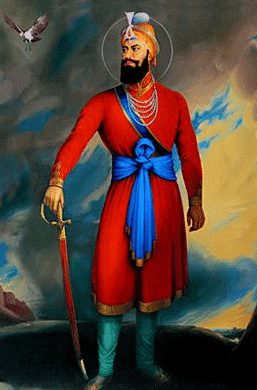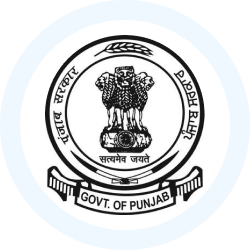PPSC PCS (Punjab) Exam > PPSC PCS (Punjab) Notes > Punjab State (PPSC) PSC: Preparation > Battles of Guru Gobind Singh Ji
Battles of Guru Gobind Singh Ji | Punjab State (PPSC) PSC: Preparation - PPSC PCS (Punjab) PDF Download
| Table of contents |

|
| Introduction |

|
| Battles After the Khalsa was Formed |

|
| Battle of Khidrana |

|
| Guru Gobind Singh Marg |

|
Introduction
Guru Gobind Singh Ji engaged in numerous battles against the Mughals and various hill Rajas. These battles can be categorized into different periods.

Battles Before the Formation of Khalsa
The battles fought before the establishment of the Khalsa are as follows:
Battle of Bhangani:
- The Battle of Bhangani was the first conflict led by Guru Gobind Singh Ji against the hill chieftains. At the age of 20, Guru Gobind Singh Ji participated in this battle.
- The battle took place in October 1688, at Bhangani, located on the banks of the river Giri, approximately 10 km from Poanta.
- It was fought between Guru Gobind Singh Ji’s forces and Raja Bhim Chand of Kahlur, Bilaspur.
- Guru Gobind Singh Ji’s army emerged victorious, leading to a friendship between Bhim Chand and the Guru.
Battle of Nadaun:
- The Battle of Nadaun occurred in 1690, involving the Mughals under Alif Khan and the hill Rajas supported by Guru Gobind Singh Ji.
- The conflict arose from the hill Rajas' refusal to pay tribute to the Mughals, as noted in Guru Gobind Singh Ji’s autobiography, the Bachittar Natak.
- This battle was the second led by Guru Gobind Singh Ji after the Battle of Bhangani, resulting in a Sikh victory over the Mughals.
Battles After the Khalsa was Formed
The battles fought in Post-Khalsa period are as follows:
First Battle of Anandpur:
- The First Battle of Anandpur took place in 1700 at Anandpur between the forces of Sikh Guru Gobind Singh Ji and the Mughal army, which was supported by the Nawab of Bahawalpur and the Rajas of the Shivalik Hills. The growing strength of Guru Gobind Singh Ji and his creation of the Khalsa military order alarmed the hill Rajas. In this battle, the Sikhs emerged victorious against the hill Rajas and the Mughals.
Battle of Nirmohgarh:
- The Battle of Nirmohgarh was fought in 1702 between the Sikhs and the Mughal Empire. Following their defeat at the First Battle of Anandpur in 1700, Aurangzeb sent an army led by Wazir Khan to confront Guru Gobind Singh Ji. Wazir Khan’s forces, reinforced by the hill Rajas, attacked the Sikhs, but the Sikhs achieved victory in this battle.
Battle of Basoli:
- The Battle of Basoli occurred in 1702 between the Mughal Empire and the Sikhs. After their defeat in the Battle of Nirmohgarh, Sikh Guru Gobind Singh Ji relocated to Basoli. The Mughal army, along with the hill Rajas led by Raja Ajmer Chand, attacked the Sikh forces. In this battle, the Sikhs defeated the hill Rajas.
Second Battle of Anandpur:
- The Second Battle of Anandpur was fought in 1704 between the Sikhs and an allied force of the hill Rajas and the Mughal army led by Wazir Khan. After suffering defeats in the First Battle of Anandpur and the Battle of Basoli, Wazir Khan attempted to negotiate with Guru Gobind Singh Ji. However, the Sikhs were ambushed by the Mughals at the river Sarsa. In this battle, the Sikhs were defeated, and Guru Gobind Singh Ji was forced to leave the fort. Wazir Khan ordered the burial alive of Guru Ji’s two younger sons, Zorawar Singh and Fateh Singh.
Battle of Shahi Tibbi:
- The Battle of Shahi Tibbi took place in 1704, when Guru Gobind Singh Ji sent a small army of 50 Sikhs, led by Udhai Singh, to resist their enemies. Despite killing hundreds of adversaries, all 50 Sikhs lost their lives in this battle.
Battle of Chamkaur:
- The Battle of Chamkaur, also known as the Battle of Chamkaur Sahib, was fought in 1704 between the Khalsa, led by Guru Gobind Singh Ji, and the Mughal forces, commanded by Wazir Khan. In this battle, the Sikhs achieved victory over the Mughals, but Guru Gobind Singh Ji’s sons, Ajit Singh and Jhujhar Singh, were killed in the conflict.
Battle of Khidrana
- The Battle of Khidrana, also known as the Battle of Muktsar, occurred in 1705 between Guru Gobind Singh Ji and the Mughal forces.
- In this battle, the Sikhs emerged victorious against the Mughals.
- However, it came at a great cost, as 40 Sikhs, later honored as Chali Mukte by the Guru, lost their lives in the fight.
- Following this victory, Guru Gobind Singh Ji moved to Talwandi-Sabo, now known as Damdama Sahib, and then continued his journey to the Deccan region.
Guru Gobind Singh Marg
- In the early part of 1973, the Punjab Government established the Guru Gobind Singh Marg and conducted the Mahan Yatra, a significant pilgrimage, from April 10th to 13th, 1973.
- This Marg (route) connected Anandpur Sahib with Damdama Sahib, spanning a distance of 640 kilometers.
- Along the way, it covered 91 historical sites and 22 villages.
- To commemorate this route, 20 pillars were erected, each providing a glimpse into the ideals and teachings of Guru Gobind Singh Ji.
The document Battles of Guru Gobind Singh Ji | Punjab State (PPSC) PSC: Preparation - PPSC PCS (Punjab) is a part of the PPSC PCS (Punjab) Course Punjab State (PPSC) PSC: Preparation.
All you need of PPSC PCS (Punjab) at this link: PPSC PCS (Punjab)
|
23 videos|50 docs|47 tests
|
FAQs on Battles of Guru Gobind Singh Ji - Punjab State (PPSC) PSC: Preparation - PPSC PCS (Punjab)
| 1. What were the key battles fought after the formation of the Khalsa? |  |
Ans. After the formation of the Khalsa in 1699, several significant battles were fought, including the Battle of Khidrana, which marked a critical point in the defense against Mughal oppression. These battles were pivotal in establishing the strength and unity of the Sikh community under Guru Gobind Singh Ji's leadership.
| 2. What was the significance of the Battle of Khidrana? |  |
Ans. The Battle of Khidrana, fought in 1705, was significant as it showcased the valor and military prowess of the Khalsa against the Mughal forces. This battle emphasized the spirit of resistance among Sikhs and solidified Guru Gobind Singh Ji's role as a leader and warrior fighting for justice and religious freedom.
| 3. How did Guru Gobind Singh Ji contribute to the Sikh military strategy during battles? |  |
Ans. Guru Gobind Singh Ji played a crucial role in shaping Sikh military strategy by introducing guerrilla warfare tactics, emphasizing mobility, and utilizing the element of surprise. He trained his followers to be skilled fighters and fostered a sense of unity and purpose, which were essential in their successful engagements during battles.
| 4. What were the outcomes of the battles fought by Guru Gobind Singh Ji? |  |
Ans. The outcomes of the battles fought by Guru Gobind Singh Ji varied, with some resulting in significant losses and others in strategic victories. Despite facing larger Mughal forces, the battles helped galvanize the Sikh community, instilling a sense of identity and resilience that would carry forward in their struggle for rights and religious freedom.
| 5. How did the battles after the formation of the Khalsa influence Sikh identity? |  |
Ans. The battles fought after the formation of the Khalsa significantly influenced Sikh identity by reinforcing the ideals of bravery, sacrifice, and commitment to justice. These engagements fostered a sense of camaraderie and collective identity among Sikhs, ultimately shaping their beliefs and practices as a distinct religious community.
Related Searches




















